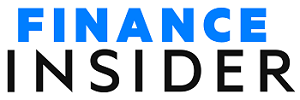In the bustling corporate world of Asia, a peculiar trend has emerged: employees spending an inordinate amount of time appearing busy rather than engaging in productive tasks. This phenomenon, aptly termed performative work, has caught the attention of researchers and industry experts alike. According to a recent survey conducted by Slack and Qualtrics, a staggering percentage of desk workers across Asia, including executives, admit to dedicating a significant portion of their work hours to activities aimed at projecting busyness rather than achieving tangible outcomes.
Here, we will get into the intricacies of performative work, and its implications on productivity, and explore potential solutions to foster a more efficient work culture.
The Rise of Performative Work
Performative work encompasses a spectrum of activities, from extensive meetings where teams primarily showcase achievements to incessant email correspondence and the constant need to maintain an online presence. The survey reveals alarming statistics, with countries like India, Japan, and Singapore leading the pack in terms of time spent on performative work. In India, a staggering 43% of employees admit to prioritizing busyness over real productivity, reflecting a concerning trend that extends across various industries and job roles.
The Pitfalls of Visible Activity Metrics
One of the driving forces behind performative work is the prevalent use of visible activity metrics by leaders to gauge productivity. Employee activity metrics such as the number of hours spent online or the volume of emails sent often take precedence over actual outcomes achieved. This emphasis on visible activity creates a disconnect between perceived and actual productivity, fostering a culture where employees feel compelled to prioritize optics over efficiency.
Controlio emerges as a potential solution to combat this issue, offering comprehensive employee activity monitoring tools that provide insights beyond surface-level metrics.
Navigating the Productivity Paradox
Despite the pervasive influence of performative work, employees express a desire for alternative methods of productivity assessment. Key performance indicators (KPIs), meaningful conversations with managers, and a focus on specific types of work emerge as preferred alternatives to traditional activity metrics.
Moreover, the advent of asynchronous work, championed during the pandemic, presents a promising avenue for fostering collaboration and efficiency without the constraints of real-time interactions.
The Controlio Solution: Empowering Productivity
In the quest to mitigate the impact of performative work, Controlio software offers a comprehensive suite of features designed to promote transparency, accountability, and efficiency in the workplace. By seamlessly monitoring employee activity and providing actionable insights, Controlio empowers organizations to identify areas of improvement, optimize workflows, and foster a culture of trust and productivity.
With robust capabilities such as time tracking, application usage monitoring, and customizable reports, Controlio equips leaders with the tools necessary to align performance metrics with tangible outcomes.
Conclusion
The prevalence of performative work in Asian offices underscores the need for a paradigm shift in how productivity is measured and incentivized. By acknowledging the limitations based on visible activity metrics and embracing alternative approaches such as asynchronous work and outcome-focused assessments, organizations can unlock the true potential of their workforce.
As the corporate landscape continues to evolve, solutions like Controlio software serve as invaluable allies in the pursuit of productivity, enabling organizations to thrive in an increasingly competitive and dynamic environment.

